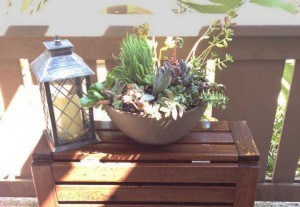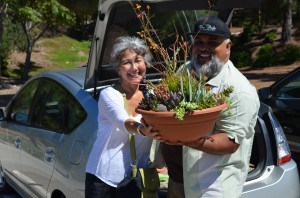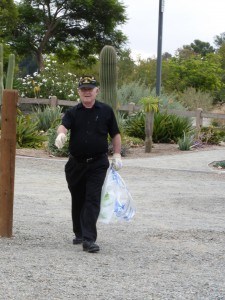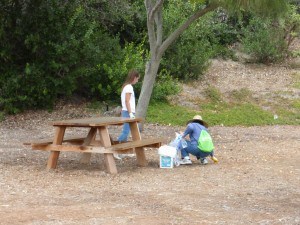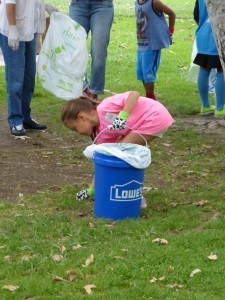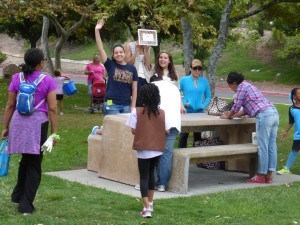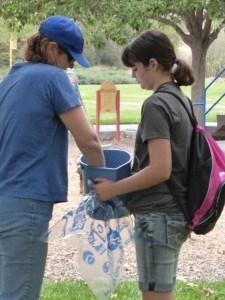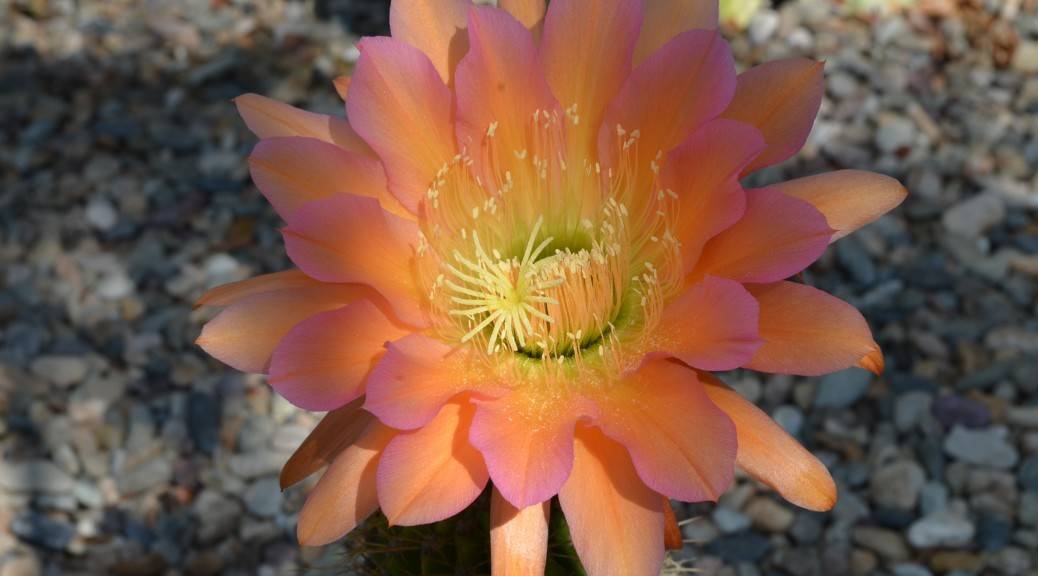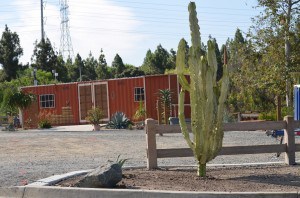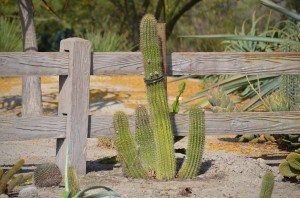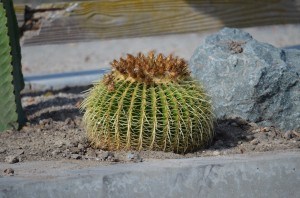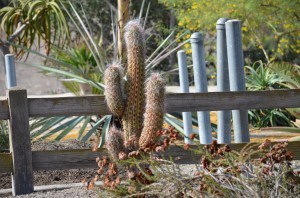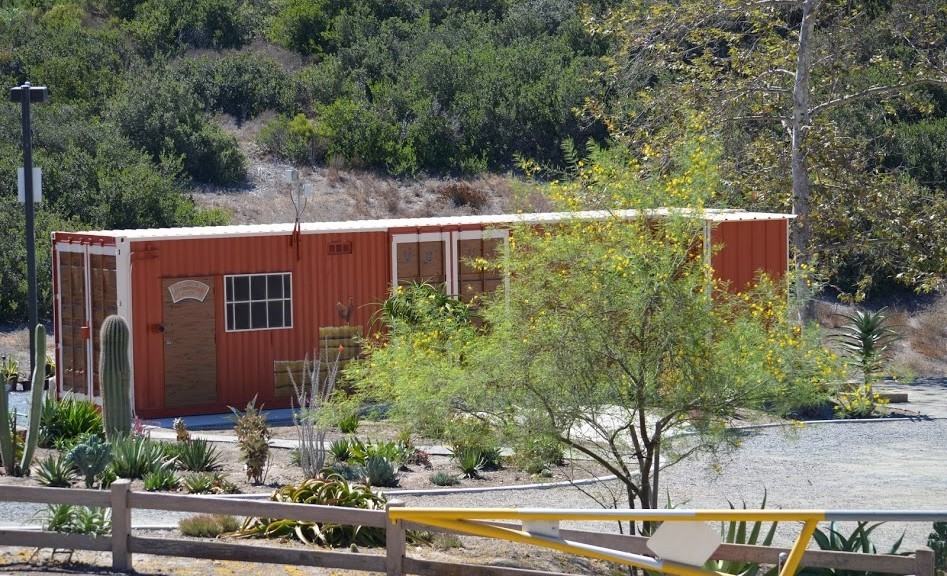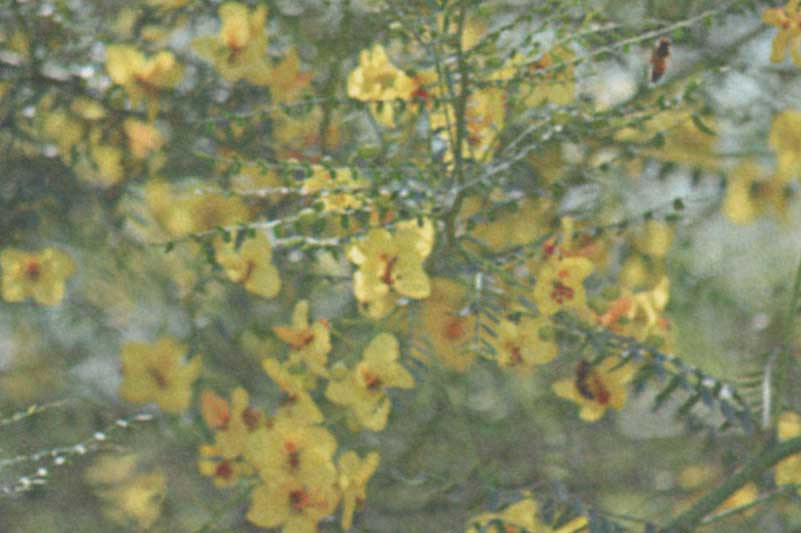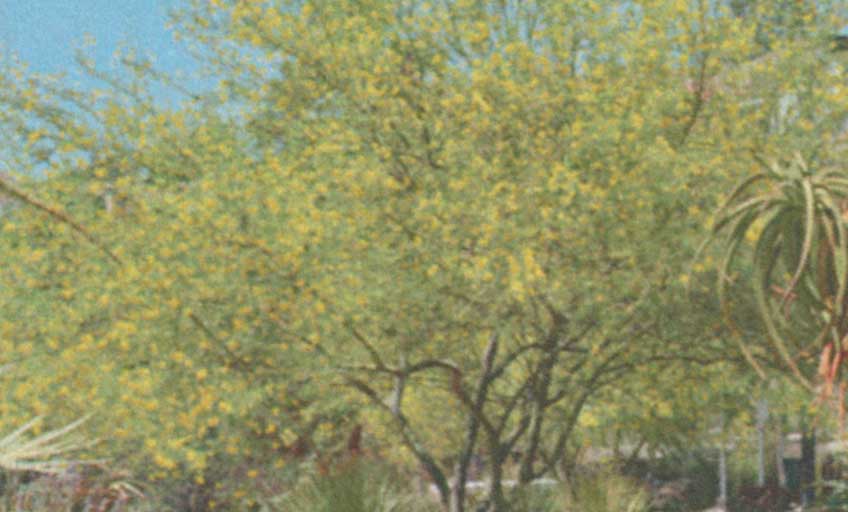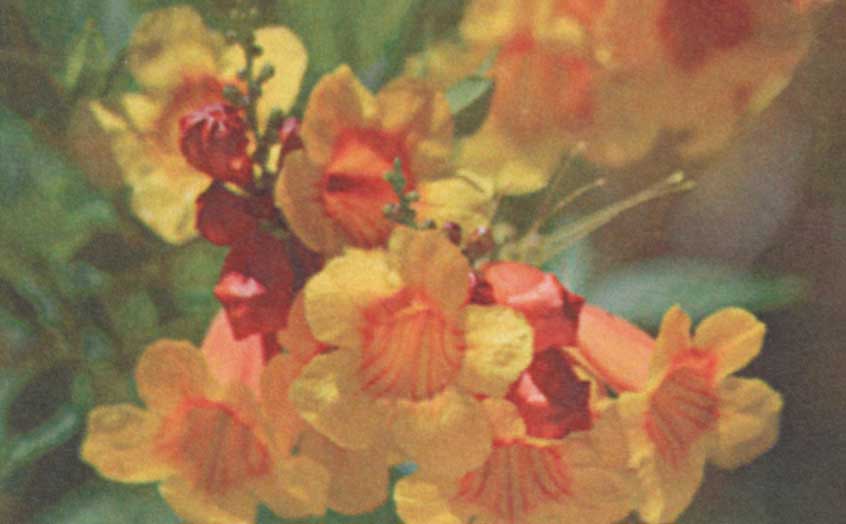There’s always something blooming at Rice Canyon!
Aloe africana – African Aloe
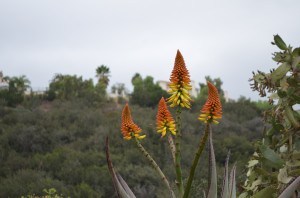
Aloe africana is native to the summer moist coastal Eastern Cape in South Africa where it grows within thickets of shrubs from sea level to nearly 1,000 feet in elevation. This aloe is a solitary often unbranched small tree-like aloe usually grows up to 6 feet with rosettes densely crowded with gracefully arching 2 foot long lance-shaped thick grayish blue-green leaves that have prominent sharp red teeth along the margins and in a row running along the middle of the lower surface with older leaves skirting the trunk. Flowering on this species can happen at other times but most often in mid-winter to early spring (January – March) with an un-branched to few-branched 2 to 3 foot inflorescence of erect long-tapering terminal spikes of flowers that are orange in bud and turn yellow just prior to opening from the bottom of the spike upward.
The individual flowers are held in a downward inclination but uniquely turn upward toward the tips, making identification of this species quite easy. Plant in full sun in well-drained soil and irrigate regularly to very little – though from a climate that gets little frost and more summer moisture within its natural range, it adapts well to our Mediterranean summer dry climate with only infrequent summer irrigation and temperatures down to 25°F. This is a great plant that can be used as a focal point like a small tree aloe and under-planted with other succulents. Keep it back from the path as the teeth are sharp, catch clothing, and cut the skin; in flower, it is sensational and also very attractive to bees and hummingbirds.

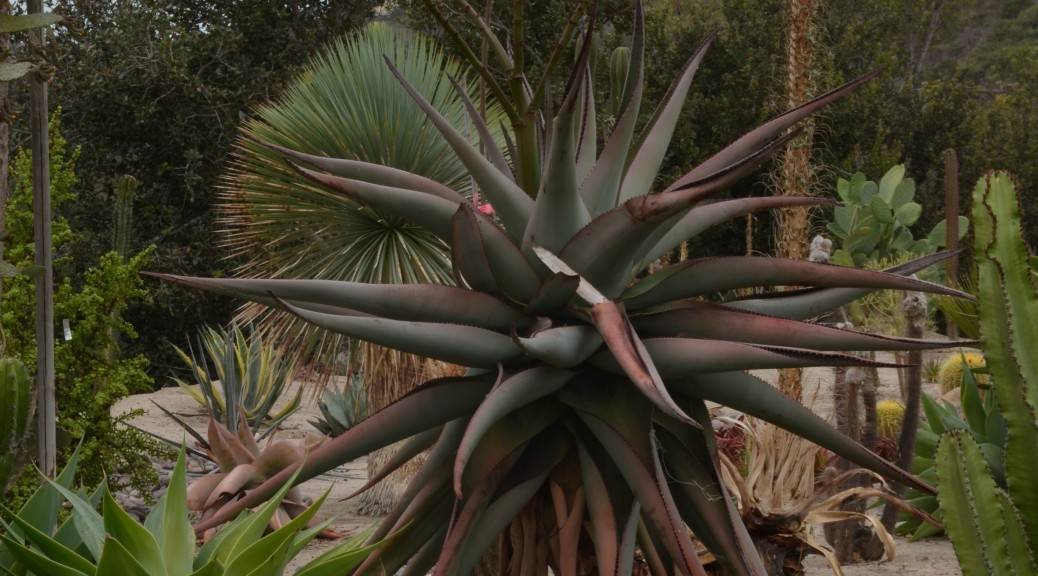
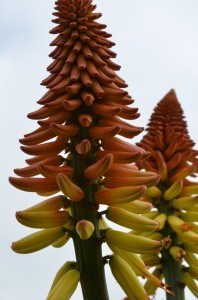
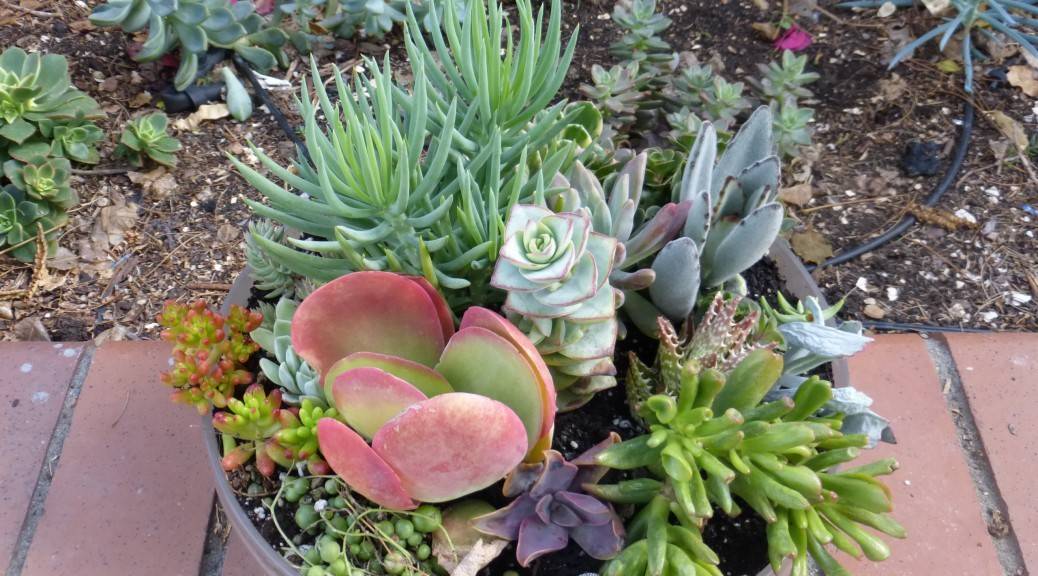
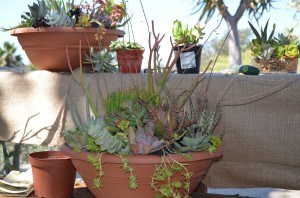
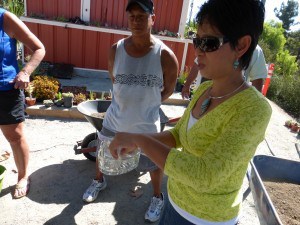
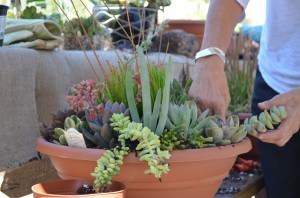
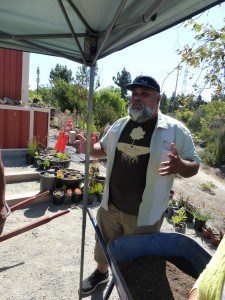
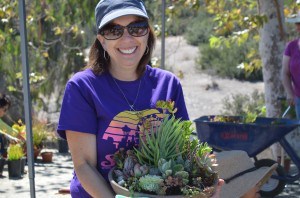
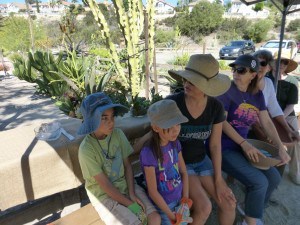
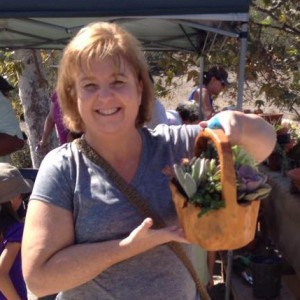
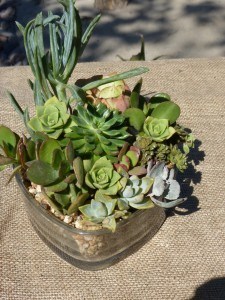 Participants used some interesting containers including a glass heart shaped dish and a “strawberry jar”.
Participants used some interesting containers including a glass heart shaped dish and a “strawberry jar”.